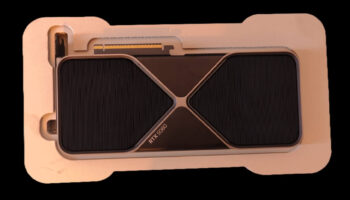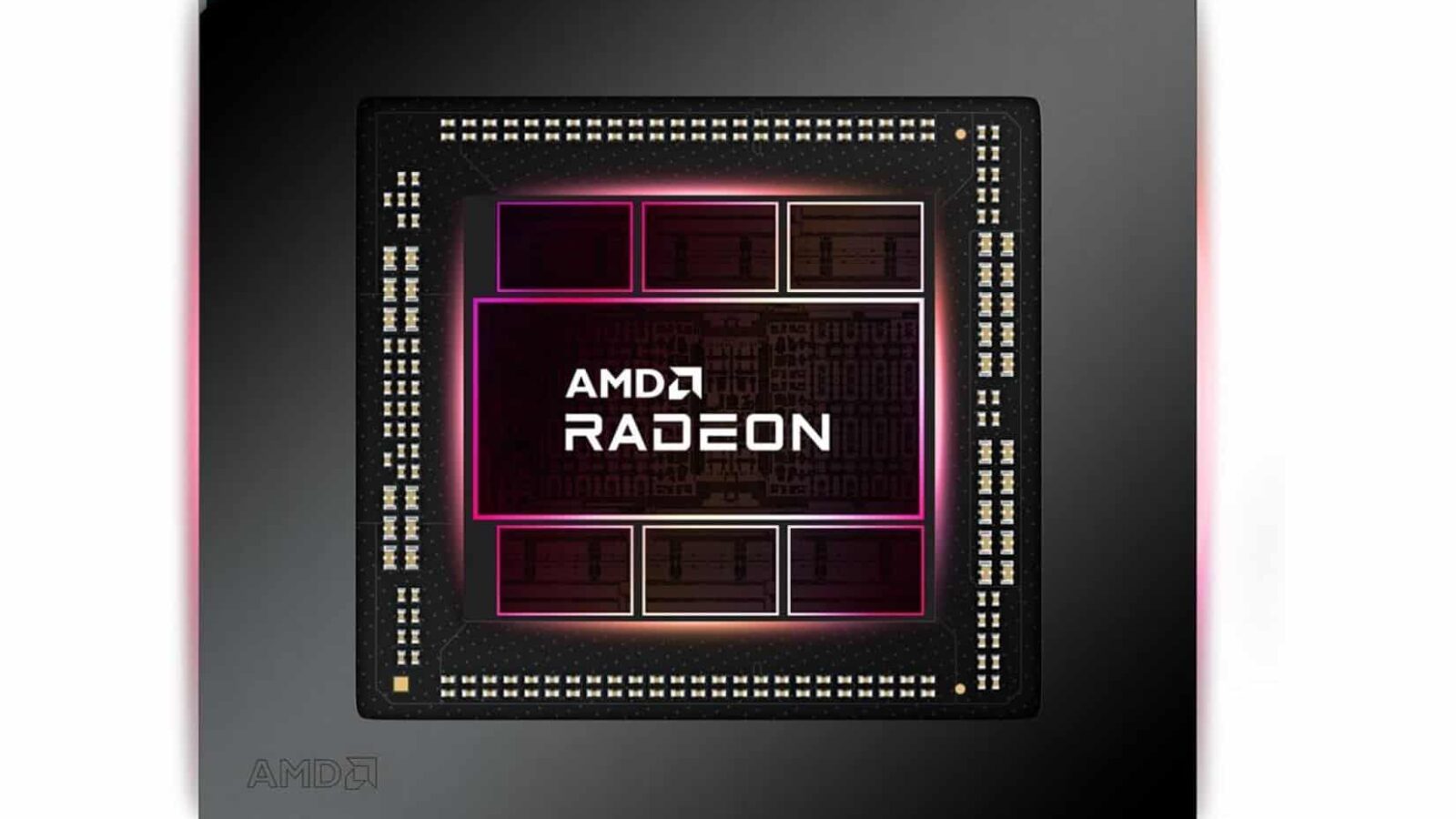
AMD’s Radeon RX 7800 XT has been in the news lately. The budget RDNA 3 GPU is expected to hit the market in the coming months with a price tag of $549-$600. It will allegedly feature 16GB of GDDR6 memory via a 256-bit bus across 64MB of L3 Cache. The Navi 32 GPU powering it (or a cutdown Navi 31) will feature 64 to 70 CUs, netting up to 4,480 stream processors and a bandwidth of over 600GB/s.
| RX 7900 XTX | RX 7900 XT | RX 7800XT | RX 6800 XT | |
| Compute units | 96 | 84 | 70 | 72 |
| Shaders | 6,144 | 5,376 | 4,480 | 4,608 |
| Ray Accelerators | 96 | 84 | 70 | 72 |
| Memory | 24GB GDDR6 | 20GB GDDR6 | 16GB GDDR6 | 16GB GDDR6 |
| Memory Speed | 20Gbps | 20Gbps | 20Gbps | 16Gbps |
| Memory Bus Size | 384-bit | 320-bit | 256-bit | 256-bit |
| Game Clock Speed | 2.3GHz | 2GHz | ? | 2GHz |
| L3 Cache | 96MB | 80MB | 64MB | 128MB |
| TBP | 355W | 315W | ? | 300W |
| MSRP | $999 | $899 | ? | $649 |
Previously, Navi 32 seemed like the most logical fit for the RX 7800 XT. However, after reviewing the Radeon PRO W7800, I believe there’s a good chance that a cutdown Navi 31 core could also take that place. Igor’s Lab has posted a thorough review of the Professional card alongside projected scores of the supposed RX 7800XT.
The Radeon PRO W7800 is a workstation card based on Navi 31. It is a cutdown RX 7900 XT with 70 CUs, down from 96 CUs on the RX 7900 XTX. It also disables two MCDs, reducing the bus width to 256-bit and the Infinity cache to 64MB. Furthermore, being a creator card, it comes with a relatively lower core clock of just 1.85GHz (which can be increased to 2.5GHz).
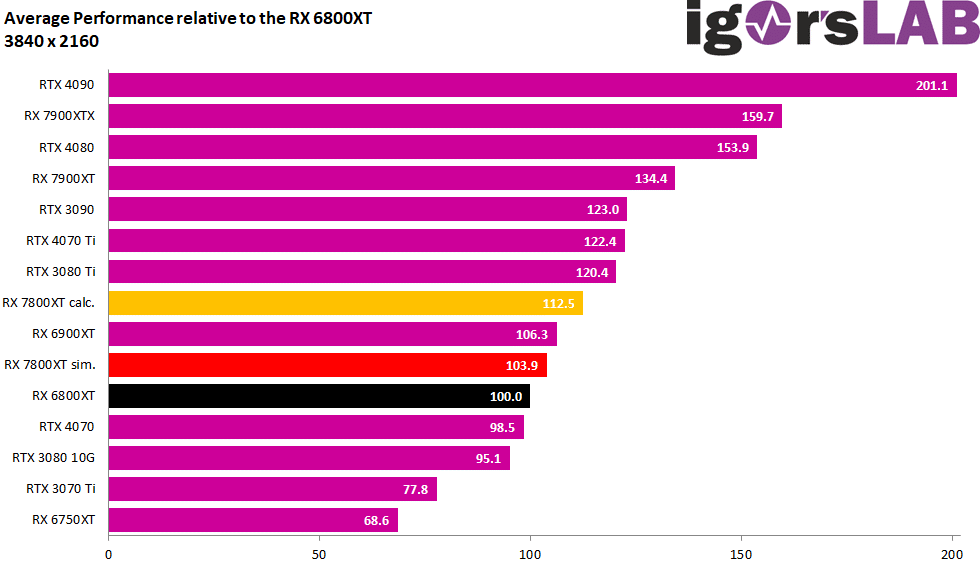
Igor thoroughly tested the Radeon PRO W7800 as a simulated RX 7800 XT and found that the latter will likely be 10-15% faster than the RX 6800 XT, 10-20% if you want to be more cautious. Interestingly, the 7800XT fared the best compared to the RX 6800 XT at 4K, registering an average gain of 12.5%.
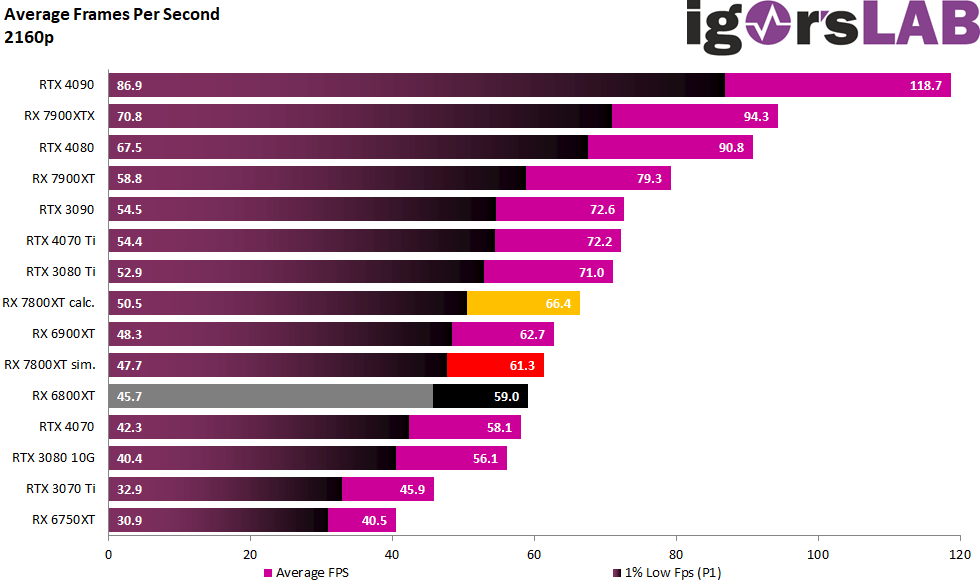
The Radeon RX 6800 XT averaged 59 FPS at 4K, while the RX 7800 XT averaged 66.4 FPS. Both GPUs are faster than the NVIDIA GeForce RTX 4070, meaning ray-tracing is left out or used sparingly.
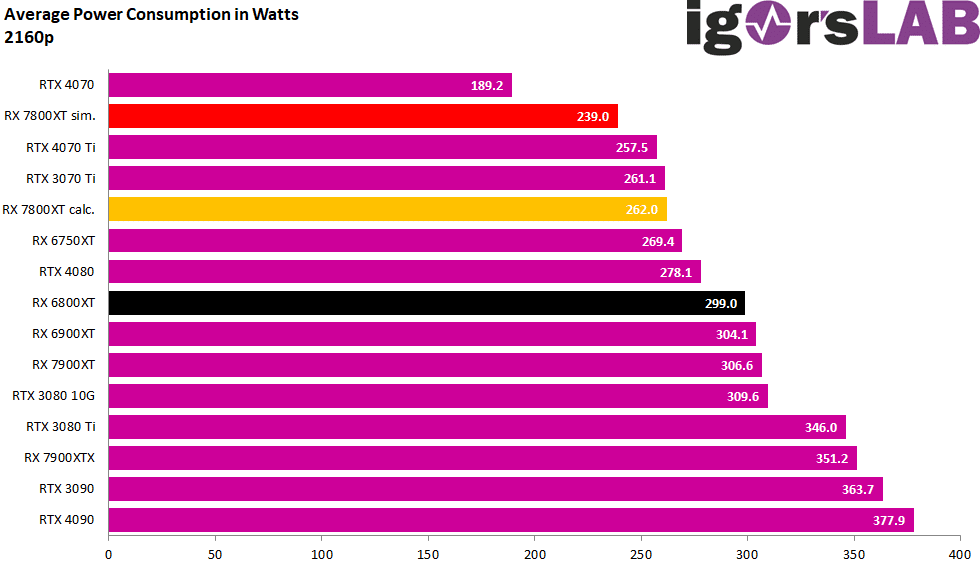
Regarding power consumption, the RX 7800 XT is 20% more efficient than the RX 6800 XT but can’t compete with the RTX 4070. It does manage to be more efficient than the RTX 4070 Ti and the RTX 4080.
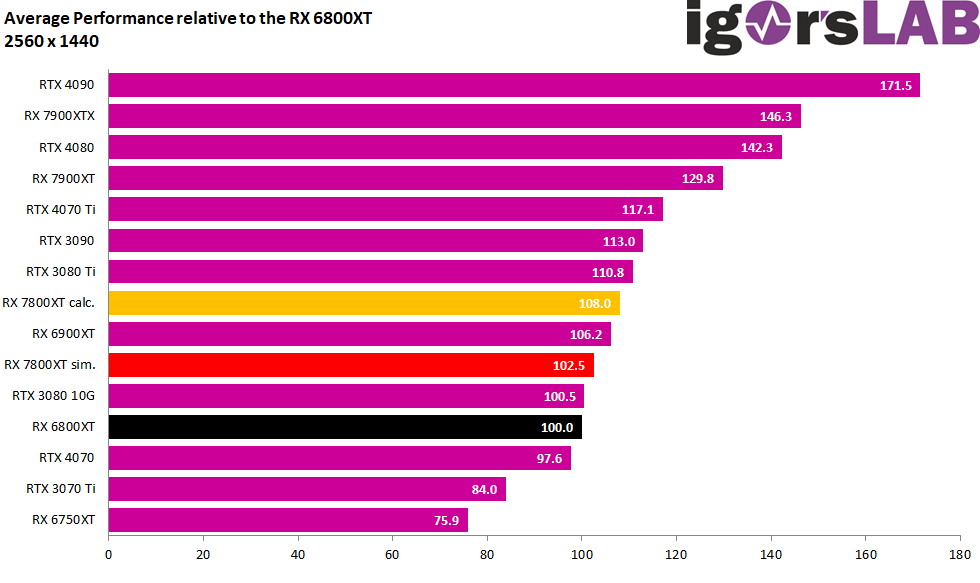
The 1440p benchmarks are more CPU bound, leaving the RX 7800 XT with a lead of just 8%. The RTX 4070 is once again slower than both Radeons in this benchmark, while the RX 7800 XT averages 118 FPS, just south of the RTX 4070 Ti.
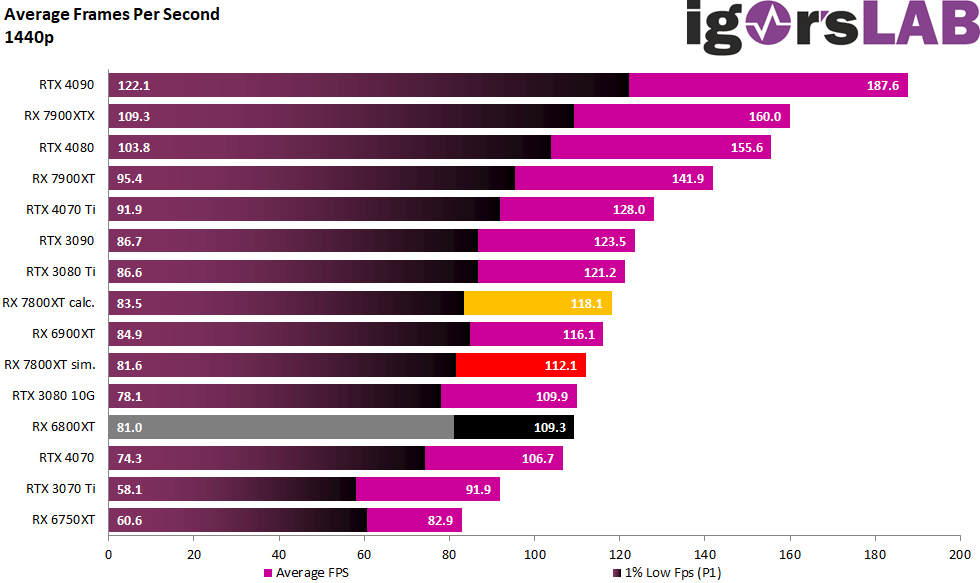
The primary difference between the RX 7800 XT and the W7800 concerns the core clocks. The Radeon will be clocked close to 3GHz while the PRO runs under 2.5GHz. Even though the clock deficit was considered, the final performance may be a few points higher or lower. Regardless of the gen-over-gen uplift, the 7800 XT may be a phenomenal budget GPU.
Related:


